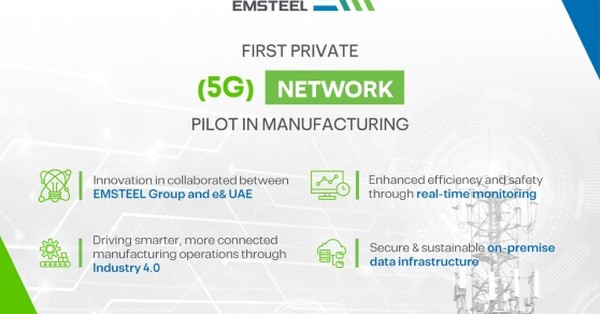Introduction to Orange’s Generative AI Strategy
In 2023, generative artificial intelligence (AI) emerged as a transformative technology, with tools like ChatGPT highlighting its potential. Orange is at the forefront of leveraging generative AI to drive business transformation and innovation. The company is committed to helping businesses navigate the complexities of generative AI, ensuring secure, ethical, and efficient implementations.
Getting Started with Generative AI: Orange’s Methodical Approach
Orange emphasizes a structured approach to adopting generative AI. Recognizing the potential benefits of AI, from operational efficiency to personalized services, Orange guides businesses through a comprehensive process to ensure successful implementation. Key Features and Benefits include:
- Employee Training and Familiarization:
- Workshops and Training Sessions: Orange offers interactive workshops, conferences, and training sessions to demystify generative AI and prepare employees for its integration into business processes. These sessions ensure that employees understand the technology and its applications.
- Ideation Workshops: These sessions help identify and prioritize use cases, laying a solid foundation for project development. By brainstorming and assessing various AI applications, businesses can focus on the most impactful areas.
- Project Implementation:
- Methodical Deployment: Orange ensures a systematic deployment of AI tools through a change management plan, supporting employees with training programs to avoid common pitfalls like data inadequacy and cognitive biases. This structured approach helps in achieving smooth transitions and maximizing the benefits of AI.
- Single Entry Point: Orange provides a one-stop shop for AI expertise, offering end-to-end support with 4,000 experts dedicated to secure and ethical AI solutions. This centralized support simplifies the AI adoption process for businesses.
Trusted GenAI Solutions by Orange Business
At the Orange Business Summit, the company launched new generative AI solutions designed to support the complete lifecycle of AI projects. These solutions, developed in partnership with LightOn and Hewlett Packard Enterprise (HPE), provide infrastructure and application support for businesses of all sizes. Key Features and Benefits include:
- SaaS GenAI Offer:
- Ease of Use: The SaaS solution, developed with LightOn, offers a ready-to-use service for various use cases, including document management, reporting, and content generation. This makes it accessible for businesses without deep technical expertise.
- Data Security and Confidentiality: Managed by Orange Business, the solution ensures data confidentiality and efficient cost control, hosted on the trusted Cloud Avenue platform. This guarantees that sensitive information is protected and managed securely.
- GPU as a Service:
- High-Performance Computing: This IaaS offer provides dedicated hardware resources for training and deploying large language models (LLMs), ensuring sufficient computing power and flexibility. Businesses can leverage high-performance GPUs for their AI needs.
- Customizable Solutions: Businesses can fine-tune and specialize their models, benefiting from ultra-high-performance GPUs for large-scale GenAI projects. This customization allows for tailored AI applications that meet specific business requirements.
FIND: Generative AI for Enhanced Customer Relations
Orange’s FIND tool leverages generative AI to streamline information search processes for call center agents, significantly improving efficiency and reducing response times. Key Features and Benefits include:
- Advanced Search Capabilities:
- Intelligent Search Engine: FIND uses an advanced search engine to browse, collect, and retrieve information from multiple data sources, generating suggested answers for customer inquiries. This enhances the accuracy and relevance of responses.
- Integration with GPT: By incorporating GPT technology, FIND can provide enriched answers and links to relevant documents, enhancing the accuracy and speed of responses. This integration ensures that agents have the most up-to-date and comprehensive information.
- Efficiency and Versatility:
- Reduced Search Time: The tool reduces the time agents spend searching for information, allowing them to focus on more complex tasks and improving overall productivity. This efficiency leads to faster resolution of customer issues.
- Wide Applicability: While primarily aimed at call center agents, FIND is also useful for other professional settings, offering a scalable solution for various information retrieval needs. Its versatility makes it a valuable tool across different departments.
Orange’s CTO Examines the Pros and Cons of Generative AI
Laurent Leboucher, Group CTO and Senior Vice President of Orange Innovation Networks, discusses the potential for generative AI in telecommunications and the need for collaboration on standards. Key Features and Benefits include:
- Opportunities in Telecoms:
- Network Automation: Generative AI can facilitate automation scripting and enhance interactions between network operating centers (NOC) and field technicians. This improves the efficiency of network management and maintenance.
- Multilingual Support: AI can solve language barriers in ticketing systems, improving efficiency across different languages and regions. This ensures seamless communication and coordination among international teams.
- Collaborative Standardization:
- Horizontal Operating Model: Leboucher advocates for a model leveraging a common telco cloud stack and GitOps for network functions and services, enhancing end-to-end automation. This model streamlines operations and improves scalability.
- Intent-Driven Management: Defining use cases for transport, IP, fixed, and radio access networks, including open RAN, to ensure clear and open API management. This approach promotes interoperability and efficient network management.
Collaboration with Google Cloud: Expanding AI Capabilities
Orange has expanded its partnership with Google Cloud to deploy AI, including generative AI, closer to its operations and customers, enhancing efficiency and responsiveness across its global network. Key Features and Benefits include:
- Smarter Networks:
- Local AI Workloads: With Google Distributed Cloud (GDC), Orange can run sensitive network data and AI workloads locally, meeting regulatory requirements and improving network planning and design. This ensures compliance with local data protection laws.
- Enhanced Automation: The partnership enables significant improvements in capacity planning and root cause analysis through automated reporting and classification. This automation reduces manual efforts and enhances accuracy.
- Operational Efficiency and Improved Customer Experience:
- AI Integration: GenAI models run on-premise, integrated with similar Vertex AI services on Google Cloud, providing faster and more accurate responses to customer service teams. This integration enhances the quality of service provided to customers.
- Personalized Recommendations: AI-driven solutions deliver personalized recommendations for phones, plans, and services, enhancing customer satisfaction and lifetime value. This personalization improves customer engagement and loyalty.
- Cloud Transformation:
- Local Cloud Solutions: Google Distributed Cloud enables Orange to establish local cloud environments, enhancing data security and resilience while optimizing performance and reducing latency. This transformation supports Orange’s digital strategy.
- Strategic Use Cases: The collaboration supports a variety of strategic use cases across Orange’s operations, enabling faster deployment and increased agility. This flexibility allows Orange to adapt quickly to changing market demands.
Orange Business Sets Out Its GenAI Stall
Orange Business has launched two GenAI offerings aimed at helping French businesses harness the potential of generative AI, encompassing both GPU-as-a-Service and SaaS platforms. Key Features and Benefits include:
- GPU-as-a-Service:
- Infrastructure Control: Provides dedicated GPU hardware for businesses to deploy their own LLMs with a partner of their choice, ensuring customization and high performance. This control allows businesses to tailor their AI projects to specific needs.
- Training and Inference: Supports fine-tuning complex models and large-scale GenAI projects, offering significant computing power and scalability. This capability enhances the development and deployment of AI applications.
- SaaS GenAI:
- Ready-to-Use Service: Developed with LightOn, this solution adapts to various use cases such as document management, reporting, and content generation, ensuring ease of use. This makes it accessible to businesses of all sizes.
- Market Uniqueness: Tailored to specific organizations with integrated document databases, providing low error rates and managed entirely by Orange Business. This ensures high accuracy and reliability.
Conclusion
Orange is leading the charge in integrating Generative AI into its operations, enhancing business efficiency, and ensuring data security. Their innovative use of AI demonstrates the transformative potential of Generative AI in various industries, from telecommunications to renewable energy. These initiatives highlight Orange’s commitment to innovation, customer-centricity, and responsible AI practices.







































